How Vegetation Density Affects Garden Microclimates
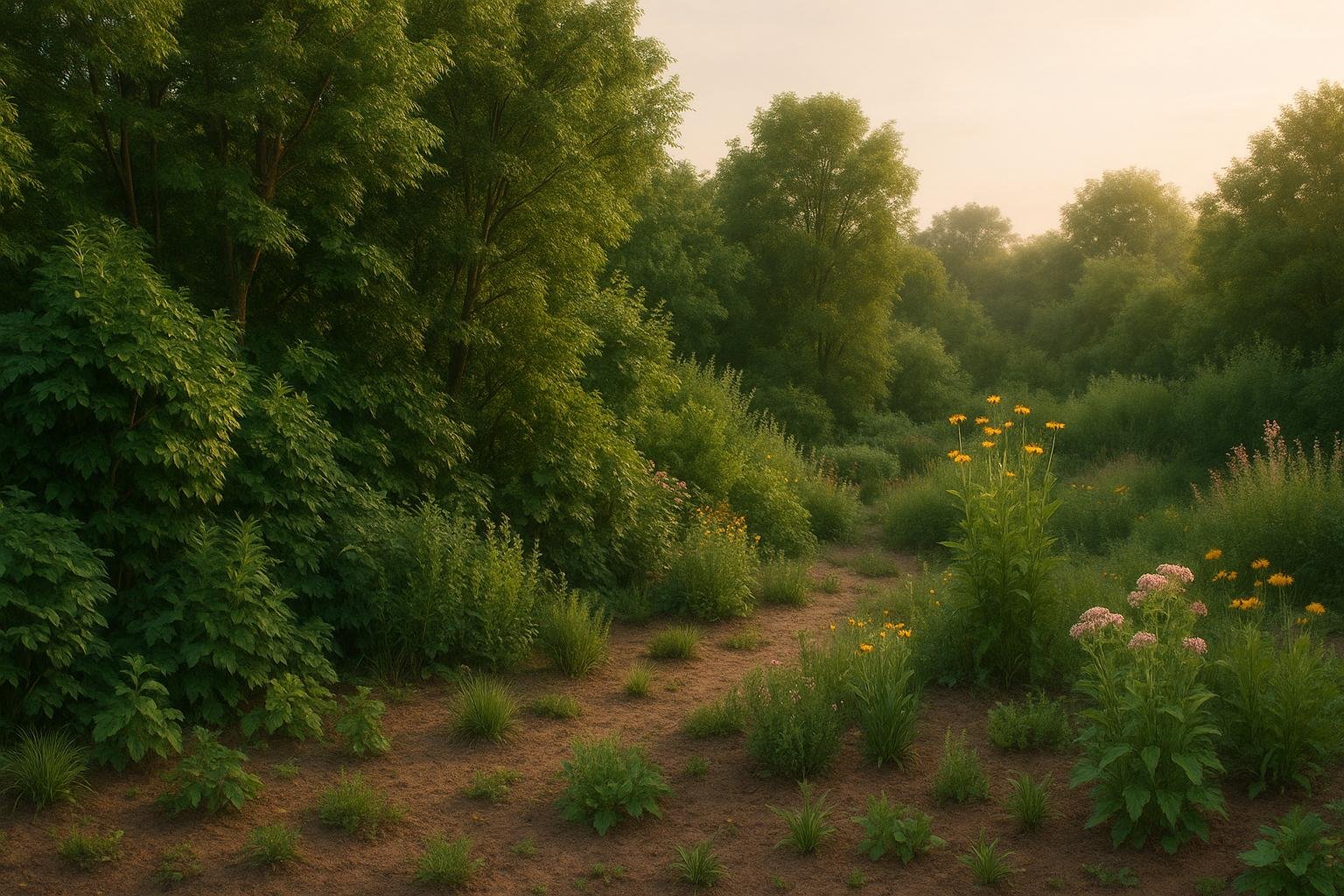
Dense vegetation can transform your garden into a natural climate control system. It cools the air, boosts humidity, and reduces wind, creating ideal conditions for plants and people alike. Here's how:
- Temperature Control: Dense plantings can lower temperatures by 2–9°F through shade and evapotranspiration, while shaded surfaces can be 20–45°F cooler than exposed areas.
- Humidity Boost: Plants release moisture, increasing local humidity by up to 10%, which helps moisture-loving plants thrive.
- Wind Reduction: Vegetation acts as a natural windbreak, cutting wind speeds by 50% or more, protecting delicate plants and reducing water loss.
- Microclimates: Use trees, shrubs, and groundcovers to create zones with specific light, temperature, and moisture levels tailored to different plants.
What Are Garden Microclimates?
Defining Microclimates
A microclimate refers to a small area with climate conditions that differ from the surrounding region. Even within a single garden, different spots can have their own unique conditions.
"A Microclimate is an area within a region whose growing climate is different than the larger general zone due to a specific situation's affect on it." - Chris McLaughlin
Several factors contribute to these localized climate variations. Topography is a big one - temperature tends to drop as elevation increases. Even in a backyard, valleys might experience more frost than higher ground because cold air naturally settles in lower areas. Sunlight exposure also plays a major role. South-facing areas often get more warmth and light compared to shaded, north-facing spots.
Structures and water features further influence microclimates. For instance, cities can be as much as 10°F warmer than nearby rural areas on calm, clear nights due to the urban heat island effect. On a smaller scale, a brick wall, a fence, or even a large tree in your garden can create similar temperature differences.
While the USDA Hardiness Zone map offers general guidance on plant selection based on average winter temperatures, it doesn’t account for the specific features of your yard that shape unique growing conditions. Understanding these microclimates is key to creating a thriving garden.
Next, we’ll explore how these microclimate variations directly impact plant growth.
How Microclimates Affect Plant Growth
"Minor local variations on the overall climate, often called microclimate, can significantly influence what is grown and how." - RHS Gardening
These localized climate differences impact plant health by influencing temperature, humidity, and air circulation - factors that can make or break your garden’s success.
Temperature variations within a garden can be surprisingly stark. For example, south-facing walls and slight elevation changes can increase temperatures by 5–10°F and 3–5°F, respectively. In southern California, studies show that mid-day temperatures under shrubs can be more than 9°F cooler than in exposed areas.
Humidity levels also fluctuate depending on the garden zone. Small water features can raise humidity by 10–15% in their immediate surroundings, creating ideal conditions for plants that thrive in moist environments.
Meanwhile, air circulation is shaped by vegetation density and nearby structures. Dense plantings can shield delicate plants from strong winds, creating calmer zones where beneficial insects can flourish. However, poor airflow can lead to issues like fungal diseases and overall weak plant health.
The key to success lies in working with your garden’s natural conditions. Observe how sunlight moves through your space, note temperature changes, and track how plants respond throughout the seasons . Using these observations, you can design a garden layout that takes full advantage of your microclimates.
Guide to creating microclimates in your garden

How Vegetation Density Changes Temperature
The amount of vegetation in your garden plays a key role in shaping temperature patterns, creating unique thermal zones. By understanding microclimates and how vegetation density influences heat distribution, you can design spaces that naturally regulate temperature. This benefits not only plant health but also human comfort. Let’s explore how dense plantings work to keep things cool.
Cooling Effects of Dense Plants
Dense vegetation cools the surrounding area through two main processes: shade creation and evapotranspiration. When plants grow close together, they form canopies that block sunlight. Shaded surfaces can be 20–45°F cooler than areas exposed to direct sunlight during peak heat. At the same time, plants release water vapor through their leaves in a process called evapotranspiration. This natural cooling effect can lower peak summer temperatures by around 2–9°F in areas with dense greenery.
Additionally, providing partial shade during the hottest parts of the day can reduce temperatures by as much as 10°F or more. Strategically placed trees can also make a big difference for homes, cutting energy costs by up to 25% by reducing the need for air conditioning. Planting dense vegetation near south-facing walls or paved areas is particularly effective at keeping temperatures in check.
Studies show that even small green spaces with tree layers can lower the average air temperature during the hottest time of day by approximately 1.46°C. What’s more, areas with diverse plant communities tend to be even cooler - forests with a higher variety of species can be up to 1.5°C cooler than those with less diversity.
🚀 Ready to Reinvent Your Garden?
Join thousands of homeowners who have transformed their gardens using our AI design tool. Upload one photo to explore endless possibilities.
Get your AI garden designs →How Vegetation Density Controls Humidity
Dense vegetation doesn’t just cool your garden; it also plays a big role in managing humidity. This balance is vital for keeping plants healthy. By releasing water vapor and reducing evaporation, densely planted areas can significantly boost humidity. Understanding this relationship allows you to create spaces that naturally support a variety of plants while reducing the need for constant watering.
Higher Humidity Around Dense Plants
When plants are grouped together, they increase local humidity through a process called transpiration. Additionally, their canopy provides shade, which reduces solar radiation and slows down evaporation.
The impact of this can be quite striking. A study in Shenzhen, China, revealed that plant communities increased relative humidity by 6.21% to 8.30% compared to open spaces. Multi-layered vegetation systems - combinations of trees, shrubs, and grasses - can push relative humidity up by as much as 10%. For instance, in vegetated parklands, relative humidity ranged from 42.58% to 69.91%, while non-vegetated areas only reached 36.26% to 56.89%. On average, planted areas experienced a 6.46% rise in moisture, with some areas seeing gains as high as 17.33%.
Denser plantings, especially those with multiple layers of vegetation, are particularly effective at controlling both temperature and humidity. For gardeners, this means creating natural microclimates where moisture-loving plants like ferns, hostas, and begonias can thrive with less frequent watering.
How Plants Reduce Water Loss
Dense vegetation doesn’t just increase humidity - it also helps conserve water by shielding the area from drying winds and harsh sunlight.
For example, dense plantings can act as windbreaks. Strong winds of 31 mph can be reduced to 15 mph, and gentler breezes of 3 mph can drop to about 1 mph when blocked by vegetation. This reduction in wind speed helps minimize evaporation from both plant surfaces and the soil.
Additionally, vegetation covering the ground helps stabilize soil temperatures, which prevents extreme swings that lead to rapid moisture loss. Bare soil heats up quickly during the day and cools sharply at night, driving evaporation. A well-vegetated area, however, keeps soil moisture more consistent. By grouping humidity-loving plants together, you can create a microclimate where plants benefit from the moisture released by their neighbors while being protected from drying conditions. However, maintaining adequate air circulation is crucial to avoid fungal problems that can arise in overly humid, stagnant environments.
Plant biologist Emily Estep emphasizes the importance of spacing to prevent disease:
"A lot of diseases are foliar and spread quickly from leaf to leaf. Planting too densely and forcing the leaves of nearby plants to touch is a foliar disease waiting to happen."
The trick is to strike a balance - place plants close enough to boost humidity while ensuring there’s enough airflow to keep diseases at bay. Up next, we’ll dive into how dense vegetation influences wind and airflow in your garden.
sbb-itb-4d6a8dd
Wind and Air Movement in Dense Gardens
Dense gardens do more than just look lush - they play a vital role in shaping wind and airflow. By carefully arranging vegetation, you can create natural wind barriers that protect plants while still allowing for the airflow they need to thrive.
How Dense Plants Block Wind
Thick plantings act as porous shields, slowing wind without completely cutting it off. Unlike solid walls, which can cause turbulent air currents, vegetation reduces wind speed more gently while maintaining some circulation.
These natural windbreaks can improve growing conditions up to 30 times the height of the barrier. For instance, a 10-foot hedge could enhance conditions up to 300 feet downwind. To maximize effectiveness, place your windbreak two to five times the mature height of the trees away from the area you want to protect.
Design matters when creating these barriers. A single row of trees or shrubs is often the most efficient, but staggered rows with two or three layers can also work well. Trees with wider bases and narrower tops tend to provide better wind protection compared to those with uniform shapes.
For the best results, plant evergreen windbreaks perpendicular to the direction of prevailing winds. Position these trees about 50–100 feet from the area you’re shielding, and layer taller shrubs behind medium-height plants. Trees and shrubs with crowns close to the ground are particularly effective at blocking wind where it matters most.
Different types of vegetation influence airflow in unique ways. Trees tend to push air downward, while shrubs direct it upward. By combining them strategically, you can create a dynamic airflow system that benefits different parts of your garden.
Maintaining Airflow to Prevent Disease
While protecting your garden from harsh winds is important, completely trapping air can lead to problems like fungal diseases, which thrive in stagnant, humid conditions. Striking the right balance between protection and airflow is essential.
Regular pruning helps maintain open canopies and prevents branches from crossing, ensuring proper air circulation. Spacing plants to avoid overlapping canopies also creates channels for airflow, reducing the risk of excessive humidity.
Leave small gaps in windbreaks to allow cold air to drain away, especially in low-lying areas where frost can settle. Without these gaps, dense plantings can trap cold air, increasing frost damage risk. For example, openings at the base of slopes can help cold air escape, shielding delicate plants.
If you’re using living barriers like bamboo, prune new shoots in spring to manage density and guide growth. For ornamental grasses, cut them back to about 6–8 inches in late winter before new growth begins. Also, divide clumps every 3–4 years to prevent overcrowding.
The ultimate goal is what landscape experts call filtered wind protection - reducing wind speeds enough to protect plants while maintaining the airflow necessary to keep them healthy. This balanced approach shields your garden from damaging winds while ensuring good air circulation to prevent disease.
Design Tips for Using Vegetation Density
Taking advantage of how vegetation density influences temperature, humidity, and wind can help you create an environment that optimizes growing conditions. By carefully planning your garden, you can work with nature to achieve a thriving landscape.
Creating Layers for Different Microclimates
Designing effective microclimates often involves mimicking the natural structure of ecosystems. Picture a forest: tall trees form a canopy that shades medium-sized shrubs, which then protect ground-level plants. This layering not only regulates light but also increases humidity as you move closer to the ground.
Start by establishing a canopy layer with deciduous trees. These trees provide shade during the summer and allow sunlight to filter through in winter. Beneath them, plant shrubs that shield groundcovers from direct sunlight. This cascading system creates a balanced environment for various plant types.
Incorporate vertical supports like walls or fences for climbing plants to enhance wind protection and reduce heat buildup. These supports can seamlessly fit into your layered design.
One study in Tunisia highlights the benefits of layering. Researchers found that herbaceous plants growing under savanna trees experienced temperatures 4°C cooler and a lower vapor pressure deficit, leading to four times the growth compared to plants in open areas.
To make this system work efficiently, group plants with similar needs for water, sunlight, and wind within each layer. This ensures that every plant thrives in its designated space while contributing to the overall microclimate.
Placing Dense Plants for Seasonal Benefits
Strategic placement of dense vegetation can enhance your garden's performance throughout the seasons. For instance, planting deciduous trees on the south side of your garden or home can provide shade during hot summers and allow sunlight to warm your space in winter when the leaves fall.
To protect against harsh winter winds, position evergreen trees and shrubs on the north or northwest sides of your property. These natural windbreaks should be planted at a distance of two to five times their mature height from the areas you want to shield. For example, a 20-foot-tall evergreen should be placed 40 to 100 feet away for the best wind reduction. In northern parts of the U.S., such windbreaks can cut heating costs by up to 30% within two years.
Additionally, low shrubs planted on the windward side of these windbreaks can trap snow, helping to insulate plant roots during the winter.
In the summer, you can create openings in dense plantings to direct cooling breezes toward heat-sensitive crops. Taller plants like corn or sunflowers can be positioned on the north side to provide afternoon shade for cool-season crops such as lettuce and spinach.
Choosing Plants for Each Microclimate
Choosing the right plants for each microclimate is key to ensuring your garden thrives. Dense plantings naturally lower temperatures and conserve moisture, so select species that align with these conditions to reduce maintenance and boost performance.
Shade-tolerant plants like ferns, hostas, and astilbe are excellent choices for areas beneath a tree canopy. These plants thrive in cooler, more humid conditions, especially when placed near water features that further enhance moisture levels.
For wind-exposed zones, opt for plants that benefit from air circulation. Mediterranean herbs like lavender flourish in dry, breezy areas where excess moisture evaporates quickly. Dense groundcovers can also be used to shade soil and limit evaporation, creating a more stable environment for nearby plants.
When creating living windbreaks, choose fast-growing evergreens like arborvitae or holly. Plant them in staggered double rows to reduce wind speed by up to 50%.
Companion planting is another way to create favorable microclimates. For example, pair sun-loving plants with understory species that prefer partial shade. Aromatic herbs like basil and oregano can repel pests while helping retain soil moisture.
To simplify plant selection, consider tools like AIGardenPlanner, which offers plant recommendations tailored to your local climate and garden needs. Native plants are often the best choice, as they are already adapted to your region's conditions and typically require less water and care once established. Examples include Silver Buffaloberry, lupine, and spreading phlox, which naturally align with your area's temperature and rainfall patterns.
Conclusion: Using Vegetation Density to Improve Your Garden
Understanding how vegetation density influences your garden’s microclimates gives you the power to create a thriving outdoor space. By thoughtfully managing how densely you plant, you can naturally cool certain areas, create windbreaks, and establish zones with varying humidity levels to meet the needs of different plants throughout the year. These strategies open the door to smarter layering and plant placement.
Strategic layering and placement are essential. Dense plant groupings can cool and humidify their surroundings, while proper spacing ensures healthy airflow to prevent diseases. For example, planting deciduous trees to block the intense summer sun while allowing winter light to filter through takes advantage of nature’s built-in climate control.
Pay attention to how seasonal changes affect your garden. Monitor temperature and humidity shifts in various areas and adjust your planting plans to match. South-facing slopes, for instance, tend to collect more heat, which can speed up growth and harvest times compared to cooler, shaded spots. Incorporating these microclimate variations into your planning can make a big difference in your garden’s success.
For a more visual approach, tools like AIGardenPlanner can help. This AI-powered design platform lets you simulate plant growth and spacing, making it easier to experiment with different layouts and microclimate strategies before you start planting.
Ultimately, success comes down to balance: creating microclimates while maintaining airflow, providing shade without blocking too much sunlight, and protecting against wind without causing stagnant air. By weaving these elements together, your garden can transform into a self-sustaining ecosystem that supports plant health and reduces upkeep all year long.
🎨 Visualize Your Dream Garden Today!
Transform any outdoor space into a professional landscape design in minutes. Just upload a photo, choose your style, and let our AI do the rest.
Start your garden transformation now →FAQs
How can I identify and use microclimates in my garden to enhance plant growth?
To figure out the microclimates in your garden, start by observing how sunlight, shade, and wind interact with different areas. South-facing spots usually soak up more sunlight and warmth, while north-facing areas tend to be cooler and shaded. Look at slopes, walls, fences, and nearby structures - they can block wind or create cozy, sheltered zones that stay a bit warmer.
Don’t forget about the soil and surface materials. Sandy soil drains quickly and stays dry, while clay holds onto moisture and heat. Hard surfaces like concrete can act like "heat islands", warming up the surrounding area. You can use a simple outdoor thermometer to track temperature differences across your garden over time. By learning these patterns, you’ll be able to pick plants suited to each microclimate and create the best growing conditions for your garden.
How can I manage vegetation density to improve airflow and prevent plant diseases in my garden?
To keep your garden healthy and prevent diseases, managing plant spacing and density is key. Start by spacing your plants correctly. This allows air to move freely, helping leaves dry quickly after rain or watering, which lowers the chances of fungal infections. For instance, smaller plants like lettuce should be spaced 4–6 inches apart, while larger ones like tomatoes need 24–36 inches of space to thrive.
Another important step is regular pruning and thinning. Cutting away overcrowded or dead branches improves airflow within the plant canopy and reduces competition for nutrients. This not only leads to healthier plants but also creates less favorable conditions for diseases to develop. By keeping your vegetation density in check, you set the stage for a vibrant and easier-to-maintain garden.
How can adjusting vegetation density in my garden help with seasonal temperature changes and lower energy costs?
How Vegetation Density Impacts Energy and Comfort
Managing the density of vegetation in your garden isn't just about aesthetics - it can play a big role in controlling seasonal temperatures and saving on energy bills. Trees and shrubs, for example, provide natural shade that cools the area around them. This can significantly cut down on the need for air conditioning during scorching summer months. Shaded spaces often feel noticeably cooler than areas exposed to direct sunlight, which translates to lower cooling costs.
But there's more to it than just shade. Plants also release moisture into the air through a process called transpiration. This not only boosts humidity but also helps even out temperature swings, creating a more stable and comfortable microclimate. This is especially beneficial in regions with extreme weather shifts. By carefully planning your garden's layout and plant choices, you can create an outdoor space that supports energy efficiency while promoting a healthier and more enjoyable environment.
Related posts
Related Articles

How AI Maps Pest Trends for Better Control
Explore how AI is revolutionizing pest control with accurate predictions, eco-friendly practices, and smarter pest management strategies.
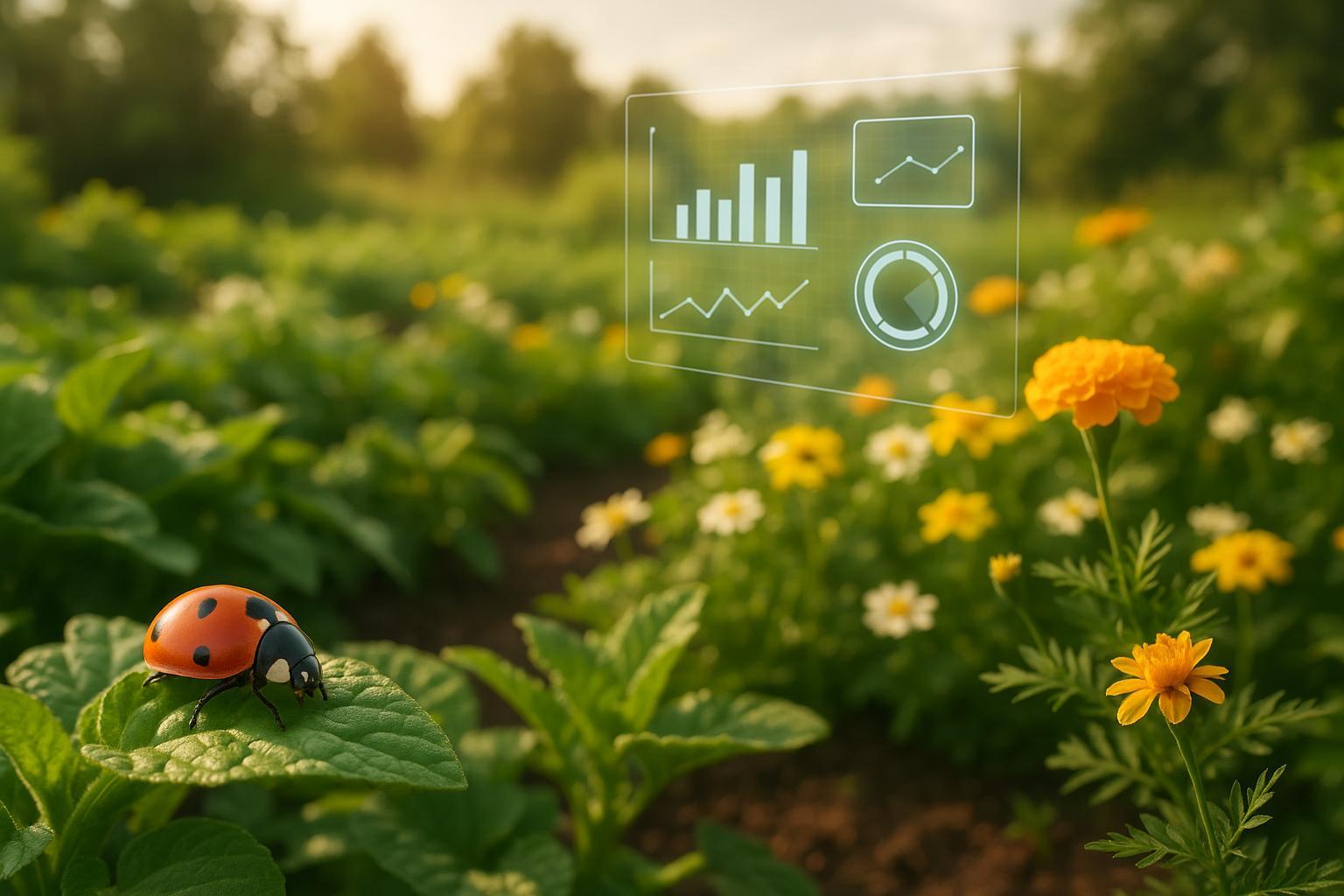
AI and Biological Controls: How They Work Together
Explore how AI enhances biological pest control, promoting sustainable gardening while effectively managing pests with minimal environmental impact.
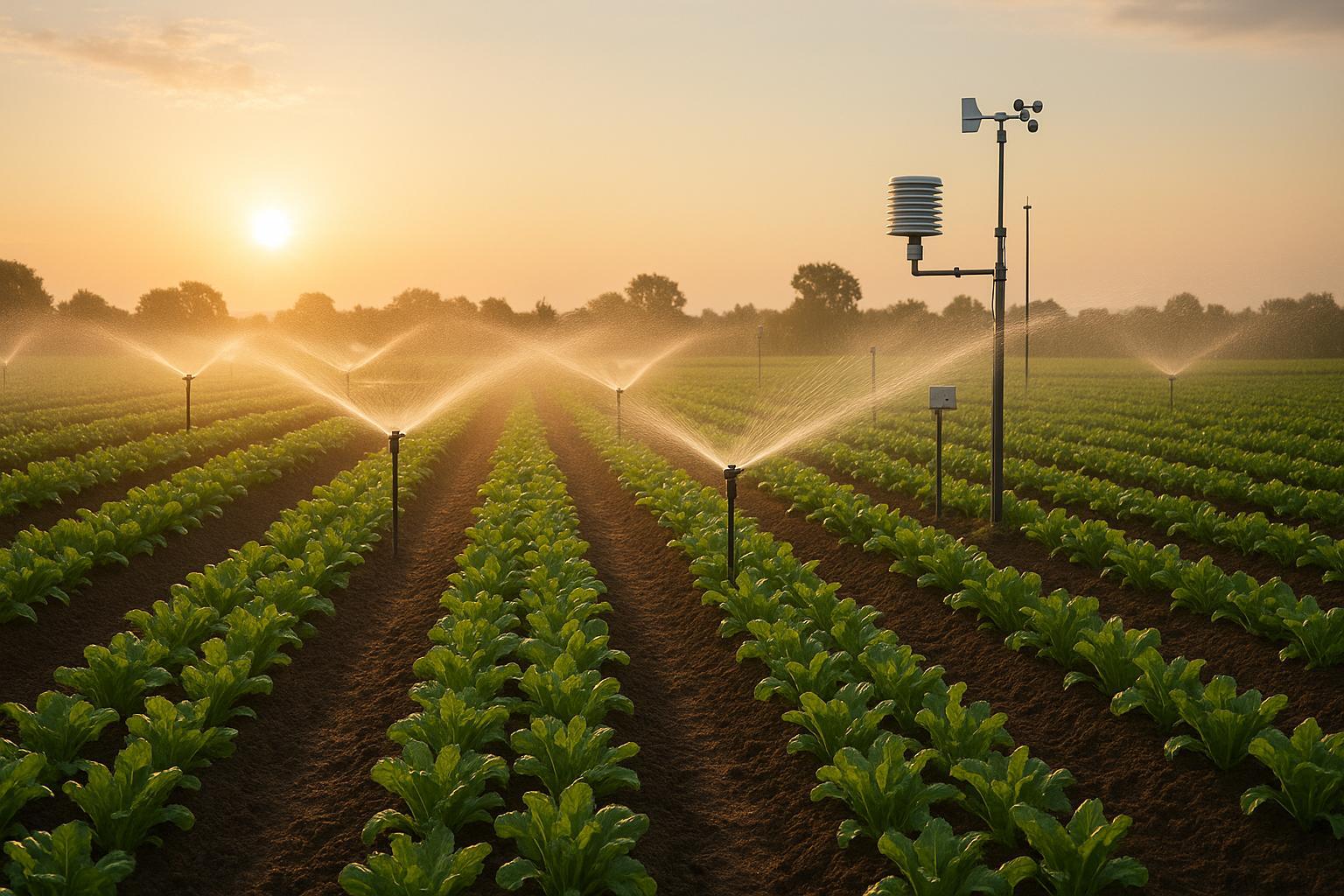
How Dynamic Irrigation Adapts to Real-Time Data
Dynamic irrigation systems utilize real-time data to optimize water use, enhance plant health, and reduce costs in gardening and agriculture.

IoT and AI for Disease Resistance Forecasting
Explore how IoT and AI are revolutionizing plant disease resistance forecasting, enhancing crop health and efficiency in agriculture.
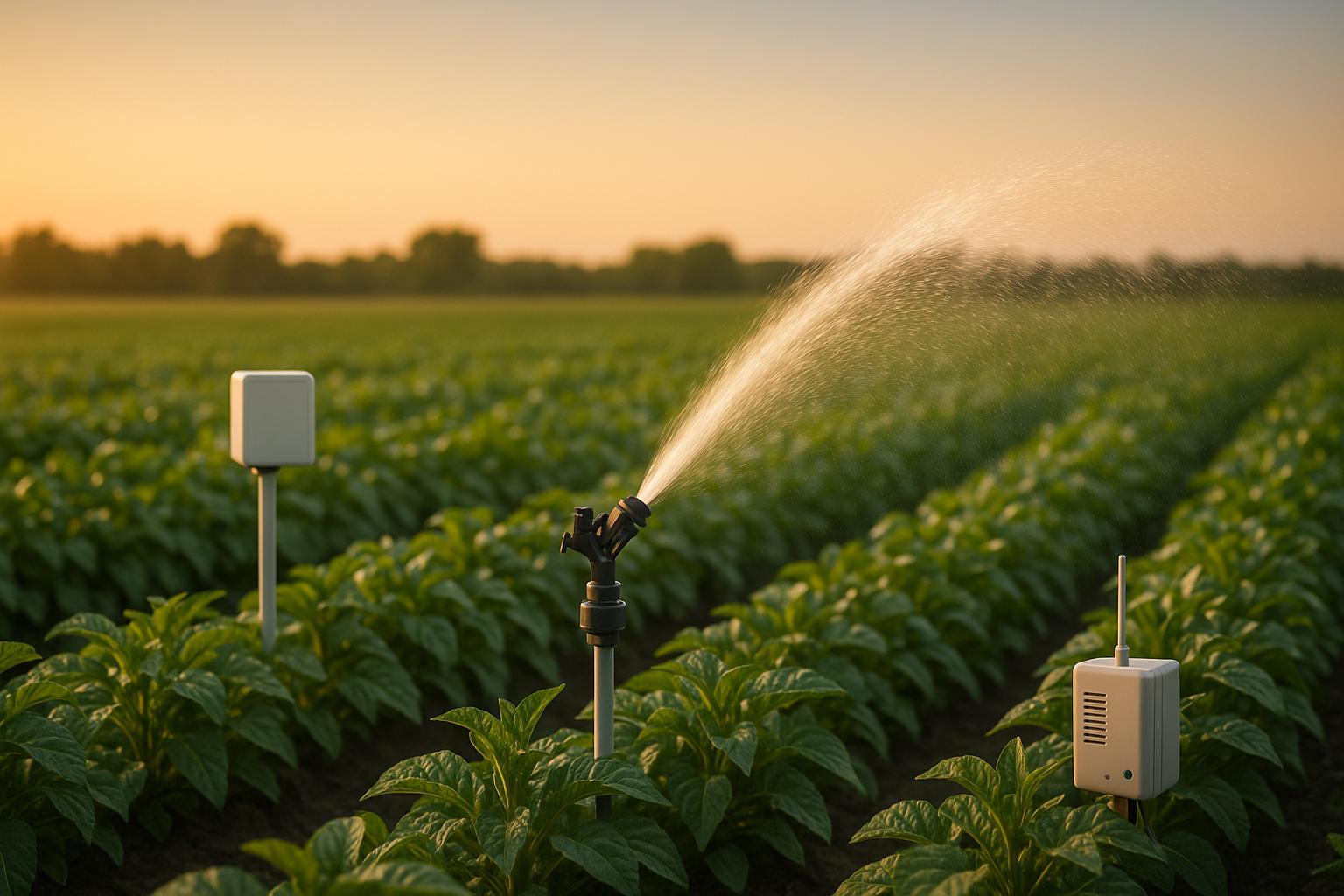
AI-Driven Irrigation: Smarter Water Use
Explore how AI-driven irrigation systems optimize water use, enhance crop health, and promote sustainability in gardening and farming.
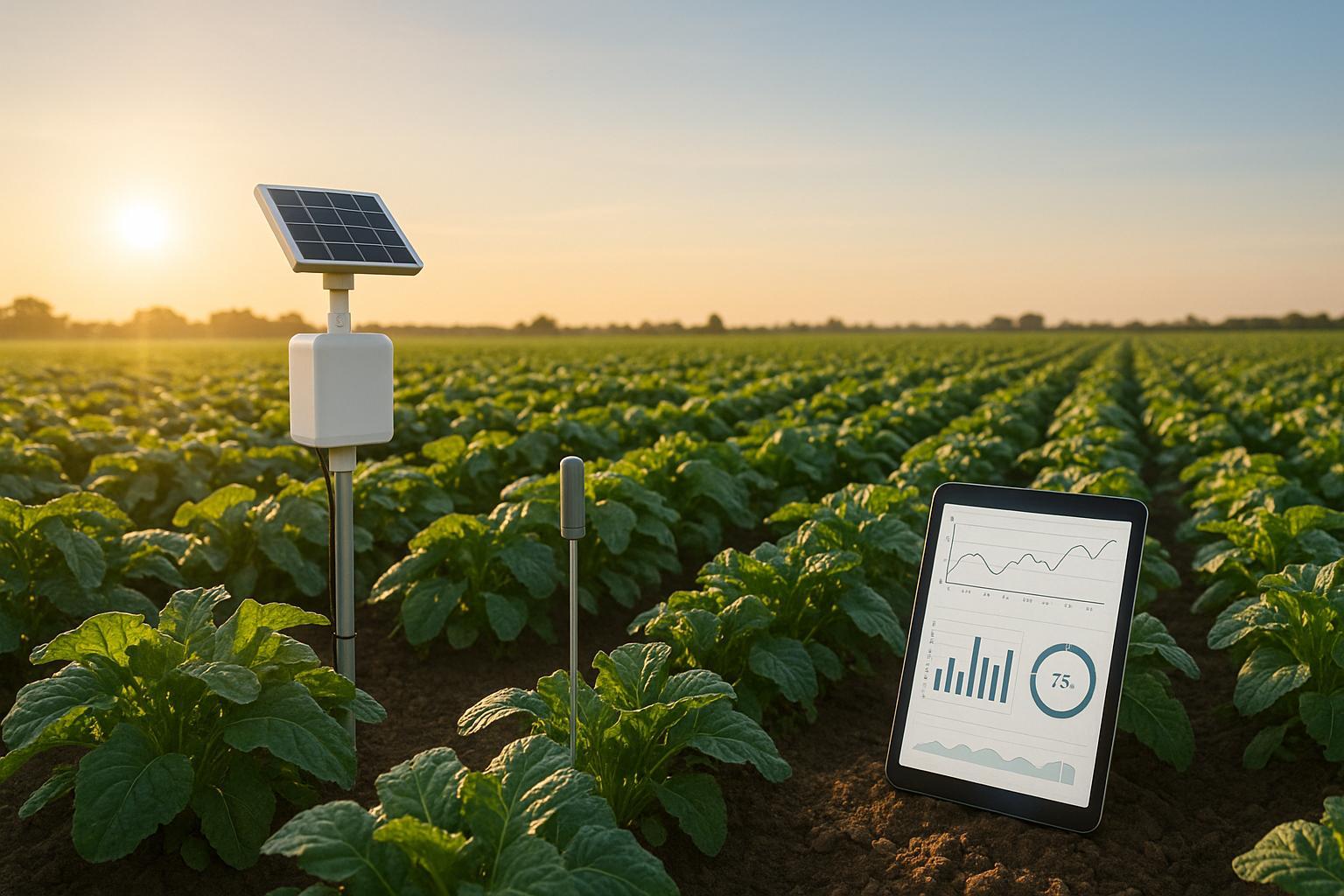
AI vs IoT: Which Drives Better Plant Growth Predictions?
Explore how AI and IoT are revolutionizing agriculture by enhancing plant growth predictions through real-time data and advanced analytics.